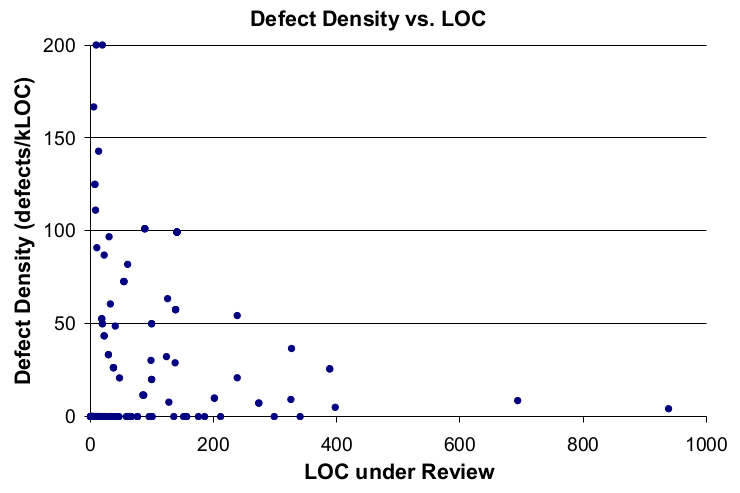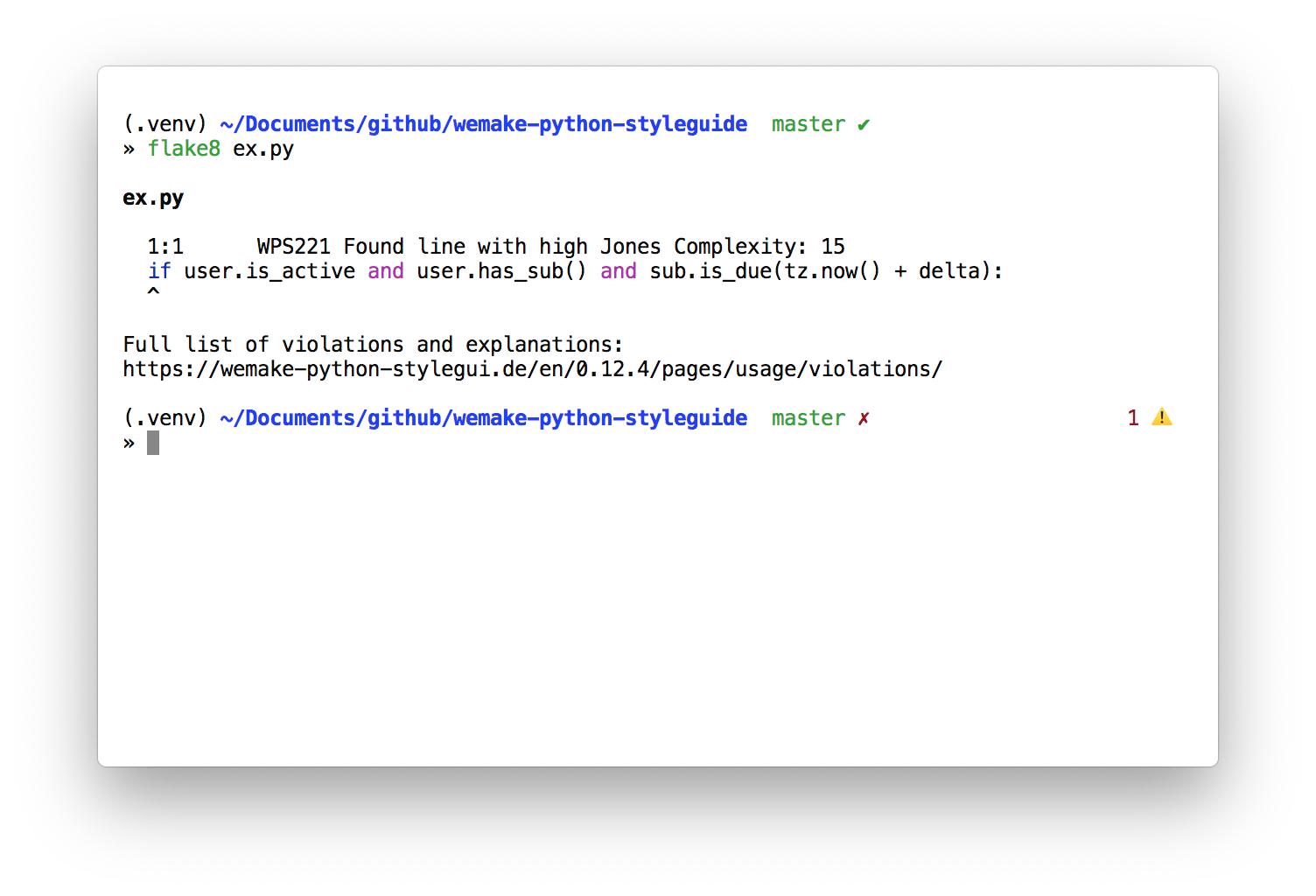
When talking about "bad code" people almost certainly mean "complex code" among other popular problems. The thing about complexity is that it comes out of nowhere. One day you start your fairly simple project, the other day you find it in ruins. And no one knows how and when did it happen.
But, this ultimately happens for a reason! Code complexity enters your codebase in two possible ways: with big chunks and incremental additions. And people are bad at reviewing and finding both of them.
When a big chunk of code comes in, the reviewer will be challenged to find the exact location where the code is complex and what to do about it. Then, the review will have to prove the point: why this code is complex in the first place. And other developers might disagree. We all know these kinds of code reviews!

The second way of complexity getting into your code is incremental addition: when you submit one or two lines to the existing function. And it is extremely hard to notice that your function was alright one commit ago, but now it is too complex. It takes a good portion of concentration, reviewing skill, and good code navigation practice to actually spot it. Most people (like me!) lack these skills and allow complexity to enter the codebase regularly.
So, what can be done to prevent your code from getting complex? We need to use automation! Let's make a deep dive into the code complexity and ways to find and finally solve it.
In this article, I will guide you through places where complexity lives and how to fight it there. Then we will discuss how well written simple code and automation enable an opportunity of "Continous Refactoring" and "Architecture on Demand" development styles.
Complexity explained
One may ask: what exactly "code complexity" is? And while it sounds familiar, there are hidden obstacles in understanding the exact complexity location. Let's start with the most primitive parts and then move to higher-level entities.
Remember, that this article is named "Complexity Waterfall"? I will show you how complexity from the simplest primitives overflows into the highest abstractions.
I will use python as the main language for my examples and wemake-python-styleguide as the main linting tool to find the violations in my code and illustrate my point.
Expressions
All your code consists of simple expressions like a + 1 and print(x). While expressions themself are simple, they might unnoticeably overflow your code with complexity at some point. Example: imagine that you have a dictionary that represents some User model and you use it like so:
def format_username(user) -> str:
if not user['username']:
return user['email']
elif len(user['username']) > 12:
return user['username'][:12] + '...'
return '@' + user['username']It looks pretty simple, doesn't it? In fact, it contains two expression-based complexity issues. It overuses 'username' string and uses magic number 12 (why do we use this number in the first place, why not 13 or 10?). It is hard to find these kinds of things all by yourself. Here's how the better version would look like:
#: That's how many chars fit in the preview box.
LENGTH_LIMIT: Final = 12
def format_username(user) -> str:
username = user['username']
if not username:
return user['email']
elif len(username) > LENGTH_LIMIT: # See? It is now documented
return username[:LENGTH_LIMIT] + '...'
return '@' + usernameThere are different problems with expression as well. We can also have overused expressions: when you use some_object.some_attr attribute everywhere instead of creating a new local variable. We can also have too complex logic conditions or too deep dot access.
Solution: create new variables, arguments, or constants. Create and use new utility functions or methods if you have to.
Lines
Expressions form code lines (please, do not confuse lines with statements: single statement can take multiple lines and multiple statements might be located on a single line).
The first and the most obvious complexity metric for a line is its length. Yes, you heard it correctly. That's why we (programmers) prefer to stick to 80 chars-per-line rule and not because it was previously used in the teletypewriters. There are a lot of rumors about it lately, saying that it does not make any sence to use 80 chars for your code in 2k19. But, that's obviously not true.
The idea is simple. You can have twice as much logic in a line with 160 chars than in line with only 80 chars. That's why this limit should be set and enforced. Remember, this is not a stylistic choice. It is a complexity metric!
The second main line complexity metric is less known and less used. It is called Jones Complexity. The idea behind it is simple: we count code (or ast) nodes in a single line to get its complexity. Let's have a look at the example. These two lines are fundamentally different in terms of complexity but have the exact same width in chars:
print(first_long_name_with_meaning, second_very_long_name_with_meaning, third)
print(first * 5 + math.pi * 2, matrix.trans(*matrix), display.show(matrix, 2))Let's count the nodes in the first one: one call, three names. Four nodes totally. The second one has twenty-one ast nodes. Well, the difference is clear. That's why we use Jones Complexity metric to allow the first long line and disallow the second one based on an internal complexity, not on just raw length.
What to do with lines with a high Jones Complexity score?
Solution: Split them into several lines or create new intermediate variables, utility functions, new classes, etc.
print(
first * 5 + math.pi * 2,
matrix.trans(*matrix),
display.show(matrix, 2),
)Now it is way more readable!
Structures
The next step is analyzing language structures like if, for, with, etc that are formed from lines and expressions. I have to say that this point is very language-specific. I'll showcase several rules from this category using python as well.
We'll start with if. What can be easier than a good-old if? Actually, if starts to get tricky really fast. Here's an example of how one can reimplement switch with if:
if isinstance(some, int):
...
elif isinstance(some, float):
...
elif isinstance(some, complex):
...
elif isinstance(some, str):
...
elif isinstance(some, bytes):
...
elif isinstance(some, list):
...What's the problem with this code? Well, imagine that we have tens of data types that should be covered including customs ones that we are not aware of yet. Then this complex code is an indicator that we are choosing a wrong pattern here. We need to refactor our code to fix this problem. For example, one can use typeclasses or singledispatch. They the same job, but nicer.
python never stops to amuse us. For example, you can write with with an arbitrary number of cases, which is too mentally complex and confusing:
with first(), second(), third(), fourth():
...You can also write comprehensions with any number of if and for expressions, which can lead to complex, unreadable code:
[
(x, y, z)
for x in x_coords
for y in y_coords
for z in z_coords
if x > 0
if y > 0
if z > 0
if x + y <= z
if x + z <= y
if y + z <= x
]Compare it with the simple and readable version:
[
(x, y, z)
for x, y, x in itertools.product(x_coords, y_coords, z_coords)
if valid_coordinates(x, y, z)
]You can also accidentally include multiple statements inside a try case, which is unsafe because it can raise and handle an exception in an expected place:
try:
user = fetch_user() # Can also fail, but don't expect that
log.save_user_operation(user.email) # Can fail, and we know it
except MyCustomException as exc:
...And that's not even 10% of cases that can and will go wrong with your python code. There are many, many more edge cases that should be tracked and analyzed.
Solution: The only possible solution is to use a good linter for the language of your choice. And refactor complex places that this linter highlights. Otherwise, you will have to reinvent the wheel and set custom policies for the exact same problems.
Functions
Expressions, statements, and structures form functions. Complexity from these entities flows into functions. And that's where things start to get intriguing. Because functions have literally dozens of complexity metrics: both good and bad.
We will start with the most known ones: cyclomatic complexity and function's length measured in code lines. Cyclomatic complexity indicates how many turns your execution flow can take: it is almost equal to the number of unit tests that are required to fully cover the source code. It is a good metric because it respects the semantic and helps the developer to do the refactoring. On the other hand, a function's length is a bad metric. It does not coop with the previously explained Jones Complexity metric since we already know: multiple lines are easier to read than one big line with everything inside. We will concentrate on good metrics only and ignore bad ones.
Based on my experience multiple useful complexity metrics should be counted instead of regular function's length:
- Number of function decorators; lower is better
- Number of arguments; lower is better
- Number of annotations; higher is better
- Number of local variables; lower is better
- Number of returns, yields, awaits; lower is better
- Number of statements and expressions; lower is better
The combination of all these checks really allows you to write simple functions (all rules are also applied to methods as well).
When you will try to do some nasty things with your function, you will surely break at least one metric. And this will disappoint our linter and blow your build. As a result, your function will be saved.
Solution: when one function is too complex, the only solution you have is to split this function into multiple ones.
Classes
The next level of abstraction after functions are classes. And as you already guessed they are even more complex and fluid than functions. Because classes might contain multiple functions inside (that are called method) and have other unique features like inheritance and mixins, class-level attributes and class-level decorators. So, we have to check all methods as functions and the class body itself.
For classes we have to measure the following metrics:
- Number of class-level decorators; lower is better
- Number of base classes; lower is better
- Number of class-level public attributes; lower is better
- Number of instance-level public attributes; lower is better
- Number of methods; lower is better
When any of these is overly complicated — we have to ring the alarm and fail the build!
Solution: refactor your failed class! Split one existing complex class into several simple ones or create new utility functions and use composition.
Notable mention: one can also track cohesion and coupling metrics to validate the complexity of your OOP design.
Modules
Modules do contain multiple statements, functions, and classes. And as you might have already mentioned we usually advise to split functions and classes into new ones. That's why we have to keep and eye on module complexity: it literally flows into modules from classes and functions.
To analyze the complexity of the module we have to check:
- The number of imports and imported names; lower is better
- The number of classes and functions; lower is better
- The average complexity of functions and classes inside; lower is better
What do we do in the case of a complex module?
Solution: yes, you got it right. We split one module into several ones.
Packages
Packages contain multiple modules. Luckily, that's all they do.
So, he number of modules in a package can soon start to be too large, so you will end up with too many of them. And it is the only complexity that can be found with packages.
Solution: you have to split packages into sub-packages and packages of different levels.
Complexity Waterfall effect
We now have covered almost all possible types of abstractions in your codebase. What have we learned from it? The main takeaway, for now, is that most problems can be solved with ejecting complexity to the same or upper abstraction level.

This leads us to the most important idea of this article: do not let your code be overflowed with the complexity. I will give several examples of how it usually happens.
Imagine that you are implementing a new feature. And that's the only change you make:
+++ if user.is_active and user.has_sub() and sub.is_due(tz.now() + delta):
--- if user.is_active and user.has_sub():Looks ok, I would pass this code on review. And nothing bad would happen. But, the point I am missing is that complexity overflowed this line! That's what wemake-python-styleguide will report:

Ok, we now have to solve this complexity. Let's make a new variable:
class Product(object):
...
def can_be_purchased(self, user_id) -> bool:
...
is_sub_paid = sub.is_due(tz.now() + delta)
if user.is_active and user.has_sub() and is_sub_paid:
...
...
...Now, the line complexity is solved. But, wait a minute. What if our function has too many variables now? Because we have created a new variable without checking their number inside the function first. In this case we will have to split this method into several ones like so:
class Product(object):
...
def can_be_purchased(self, user_id) -> bool:
...
if self._has_paid_sub(user, sub, delta):
...
...
def _has_paid_sub(self, user, sub, delta) -> bool:
is_sub_paid = sub.is_due(tz.now() + delta)
return user.is_active and user.has_sub() and is_sub_paid
...Now we are done! Right? No, because we now have to check the complexity of the Product class. Imagine, that it now has too many methods since we have created a new _has_paid_sub one.
Ok, we run our linter to check the complexity again. And turns out our Product class is indeed too complex right now. Our actions? We split it into several classes!
class Policy(object):
...
class SubcsriptionPolicy(Policy):
...
def can_be_purchased(self, user_id) -> bool:
...
if self._has_paid_sub(user, sub, delta):
...
...
def _has_paid_sub(self, user, sub, delta) -> bool:
is_sub_paid = sub.is_due(tz.now() + delta)
return user.is_active and user.has_sub() and is_sub_paid
class Product(object):
_purchasing_policy: Policy
...
...Please, tell me that it is the last iteration! Well, I am sorry, but we now have to check the module complexity. And guess what? We now have too many module members. So, we have to split modules into separate ones! Then we check the package complexity. And also possibly split it into several sub-packages.
Have you seen it? Because of the well-defined complexity rules our single-line modification turned out to be a huge refactoring session with several new modules and classes. And we haven't made a single decision ourselves: all our refactoring goals were driven by the internal complexity and the linter that reveals it.
That's what I call a "Continuous Refactoring" process. You are forced to do the refactoring. Always.
This process also has one interesting consequence. It allows you to have "Architecture on Demand". Let me explain. With "Architecture on Demand" philosophy you always start small. For example with a single logic/domains/user.py file. And you start to put everything User related there. Because at this moment you probably don't know what your architecture will look like. And you don't care. You only have like three functions.
Some people fall into architecture vs code complexity trap. They can overly-complicate their architecture from the very start with the full repository/service/domain layers. Or they can overly-complicate the source code with no clear separation. Struggle and live like this for years (if they will be able to live for years with the code like this!).
"Architecture on Demand" concept solves these problems. You start small, when the time comes — you split and refactor things:
- You start with
logic/domains/user.pyand put everything in there - Later you create
logic/domains/user/repository.pywhen you have enough database related stuff - Then you split it into
logic/domains/user/repository/queries.pyandlogic/domains/user/repository/commands.pywhen the complexity tells you to do so - Then you create
logic/domains/user/services.pywithhttprelated stuff - Then you create a new module called
logic/domains/order.py - And so on and so on
That's it. It is a perfect tool to balance your architecture and code complexity. And get as much architecture as you truly need at the moment.
Conclusion
Good linter does much more than finding missing commas and bad quotes. Good linter allows you to rely on it with architecture decisions and help you with the refactoring process.
For example, wemake-python-styleguide might help you with the python source code complexity, it allows you to:
- Successfully fight the complexity at all levels
- Enforce the enormous amount of naming standards, best practices, and consistency checks
- Easily integrate it into a legacy code base with the help of
diffoption orflakehelltool, so old violation will be forgiven, but new ones won't be allowed - Enable it into your [CI](), even as a Github Action
Do not let the complexity to overflow your code, use a good linter!
